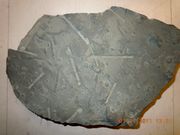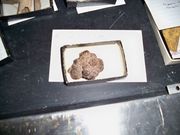Trace Fossils
From Talk:Taphonomy
While body fossils are preserved remains of actual anatomical parts of organisms, trace fossils provide evidence of behavioral patterns and ecological interactions of organisms that have entered the lithological record through fossilization. For example, these remains reveal locomotive, temporary resting marks, dwelling and feeding habits, and the evidence of these are found in fossilized tracks, trails, burrows, borings and imprints.
Ichnology, the study of trace fossils, has broken down trace fossils into several categories according to behavioral or ecological function.
Trace fossil typology[edit]
Ichnologists have catalogued trace fossils by activity1:
- Domichnia -- dwelling traces
- Repichnia -- track and trail traces
- Paschichnia -- grazing traces (which incorporated movement and feeding behaviors simultaneously)
- Cubichnia -- resting traces
- Fugichnia -- escape traces
- Fodinichnia -- feeding traces
- Agrichnia -- food trapping or growing/farming traces
Other types of trace fossils:
- Coprolites -- fossilized fecal matter
- Gastroliths -- stomach stones
1Seilacher, A., 1967, Bathymetry of trace fossils: Marine Geology, v. 5, p. 413-428.[edit]
Jdhutchison (talk)

